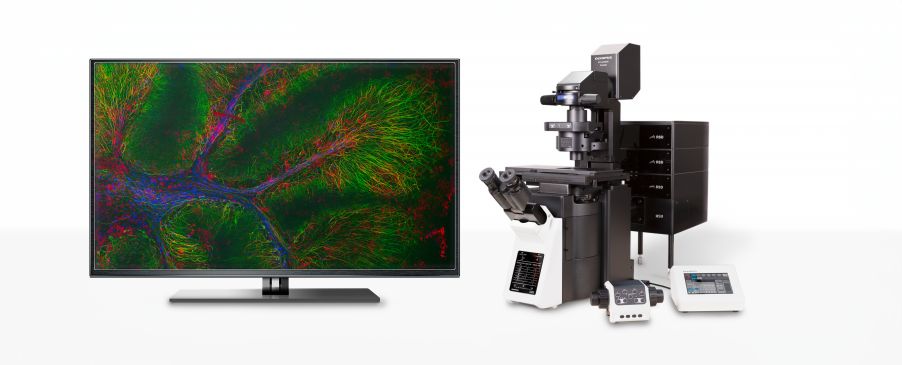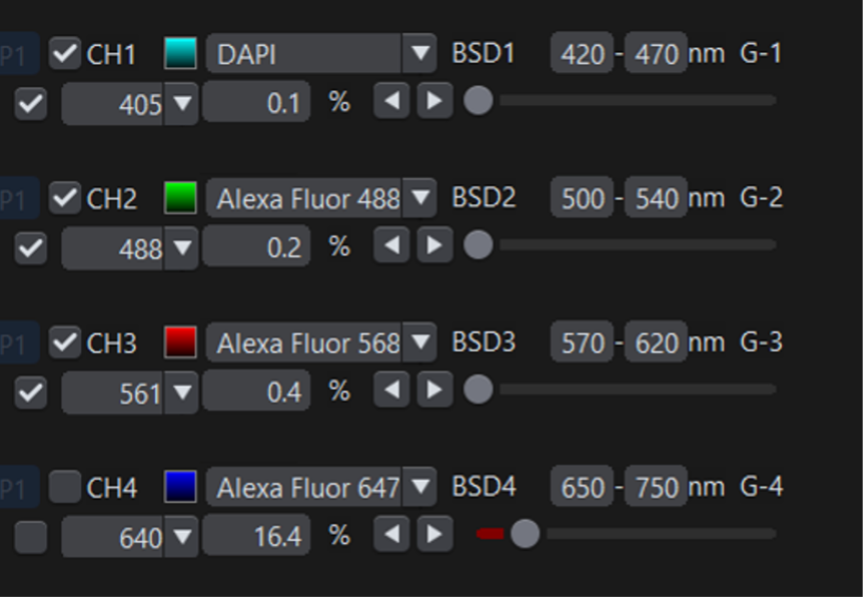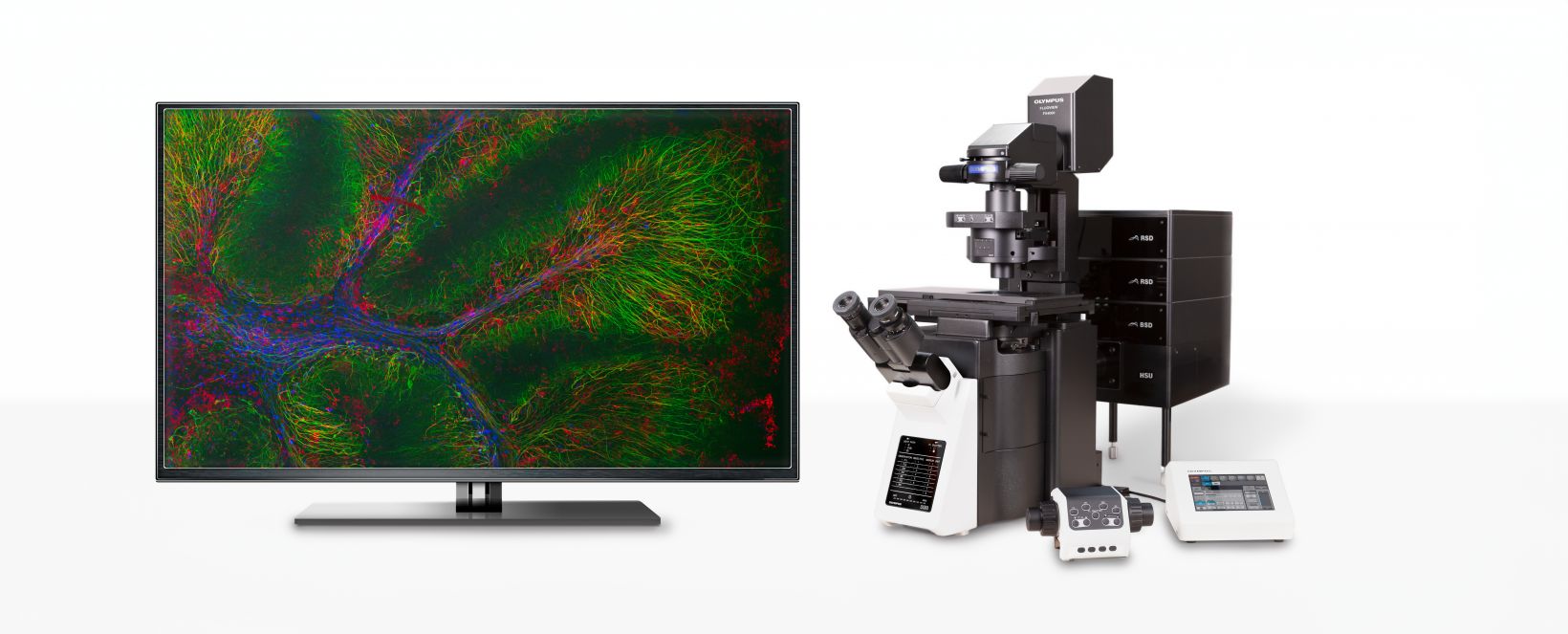The FLUOVIEW FV4000 confocal laser scanning microscope provides higher precision images to give researchers more reliable data from their samples. With our breakthrough SilVIR™ detector at the heart of the system, you can achieve much lower noise, higher sensitivity, and improved photon resolving capabilities. We spoke with product development and design leaders across Evident to learn more about how they brought the revolutionary detector technology and performance improvements to life. | 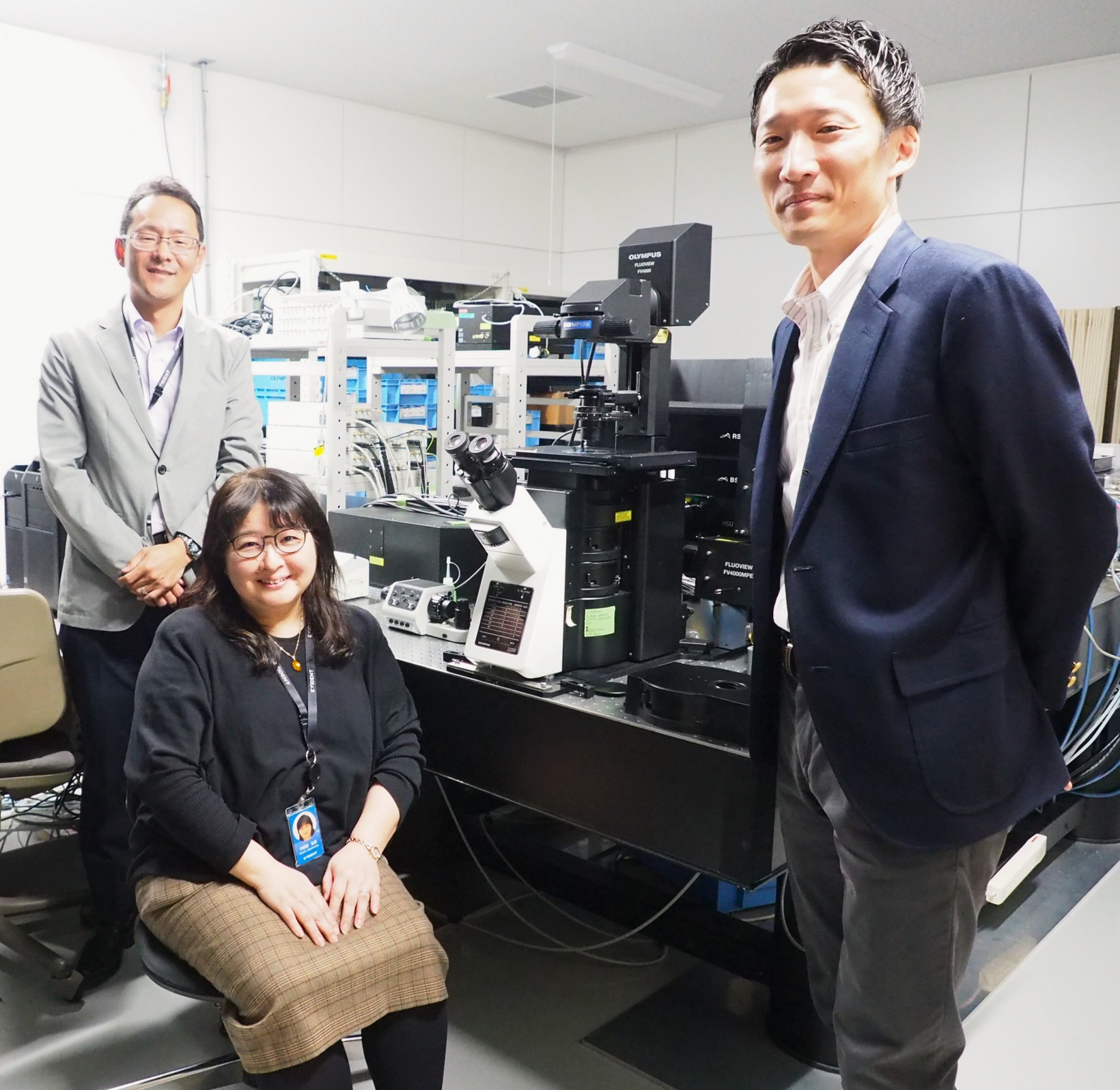 |
 | Shohei ImamuraManager, Product Strategy As a manager of the strategy team, Shohei oversees product strategy formulation and product planning at Evident. He works with R&D, manufacturing, marketing, and other functions to achieve requirements for our products. |
Q: What are the top benefits researchers can receive from using the FLUOVIEW FV4000 microscope?
Shohei: One key feature of the FV4000 microscope is the new SilVIR detector. Leveraging Evident's patented1 technology, it achieves faster and higher-quality image capture. It provides beautiful high-quality images with significantly lower noise. Boasting a 5x reduction in image acquisition time compared to the predecessor model, it significantly enhances work efficiency.2 Furthermore, the FV4000 microscope facilitates seamless quantitative comparisons with previously acquired data, addressing customer challenges and adding substantial value.
1Patent number US11237047.
2Compared to the FV3000 system with the GaAsP PMT detector.
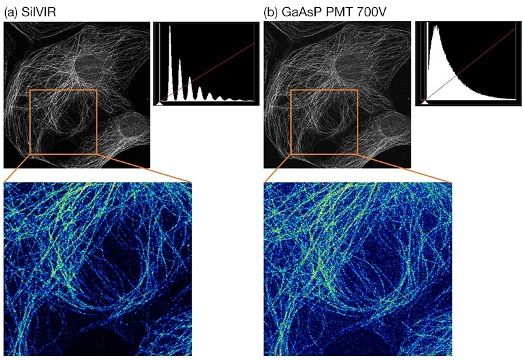
This figure shows a sample with very dim fluorescence captured by the SilVIR detector (a) and by a GaAsP PMT detector (b) at 700 V. The same sample was excited by the same laser power. The maximum fluorescence intensity is about 12 photons/2 µs. The intensity histogram of the image captured using the SilVIR detector shows a comb-like structure, which indicates the number of photons were accurately detected. More noise was observed in the background of the image acquired using the GaAsP PMT detector.
- Scanner: galvanometer scanner, 2 µs/pixel
- Excitation: 488 nm laser
- Emission: 500–540 nm
- Microtubules (Alexa Fluor 488) of PtK2 cells
 | Akinori ArayaProgram Lead, R&D As program lead, Akinori oversees product and technology development projects related to R&D for Evident's live-cell imaging solutions. |
Akinori: The performance and the usability have been greatly improved. We committed to creating a simple and easy-to-use interface. After deep and repeated discussion in R&D, marketing, and strategy, we succeeded in achieving a level of usability that greatly improves work efficiency. We achieved this by simplifying the parameter setting of the detector and providing easy adjustment in all aspects.
Shohei: The most important point is not technical excellence or detailed specifications. It is whether the system can provide value without compromise in areas where customers have compromised in the past or where their needs could not be met without compromise when they used the product. We believe this value is important and the most attractive aspect of the FV4000 confocal laser scanning microscope.
Q: What were the most challenging issues during development?
Akinori: The key development point is that with this detector change, we have completely redesigned the entire system. It is not too much to say that we have replaced the previous FLUOVIEW series products—the FV3000 and FVMPE-RS microscopes—with an all-new FLUOVIEW system with a new imaging engine. The bottleneck in this change was the technical limitation of the previous methods, mainly due to electrical aspects, data communication, and data sampling. It was difficult to make innovations using these conventional methods. For this reason, we redesigned the system from the basics and replaced the FLUOVIEW system with a new imaging engine. As a result, the SilVIR detector can now be incorporated, and we can continue to improve the high-speed, large field-of-view technology for the future based on the completely new imaging engine.
Hiromi: It was a bold decision and a challenge to replace the detector technology that we had been using in our confocal laser scanning microscope systems for over 30 years. Early in the development phase, we discussed the details with the regional sales and marketing team to help ensure that our new detector would meet our customers' requirements.
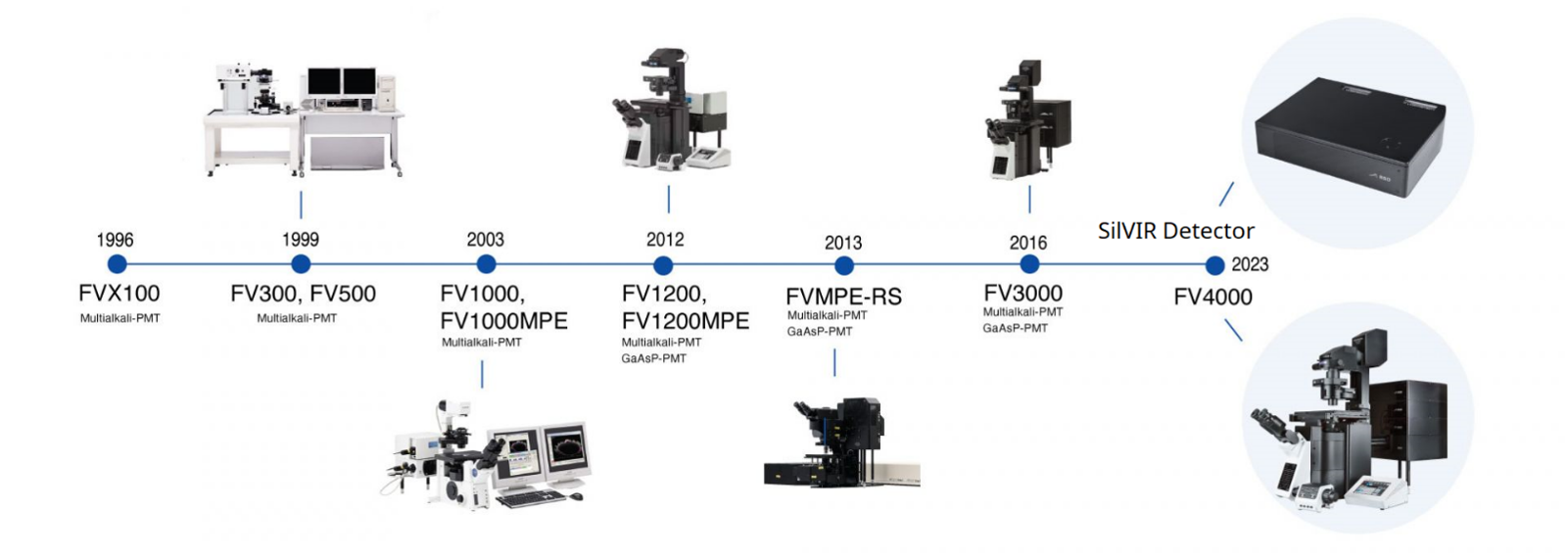
See the Confocal Microscope and Detector in Action
Ready to try out the capabilities of the SilVIR detector in your research? We offer demos of actual equipment and consultation services tailored to your application needs. You can also find detailed technical information in our white paper on SilVIR detector technology.
Please contact us with any questions about the selection of an imaging system or the installation process. For more info on all the product features and microscope frames, visit our FV4000 product page.
Related Content
Brochure: FV4000 Confocal Laser Scanning Microscope
White Paper: Next-Gen SilVIR Detector for the FLUOVIEW FV4000 Confocal Microscope
